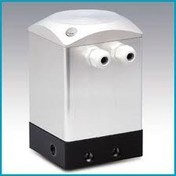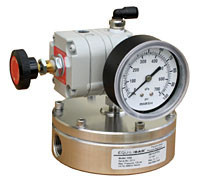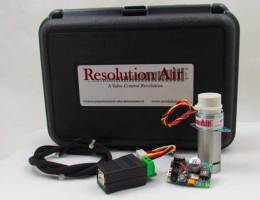Frequently Asked Questions
I/Ps
What is an electropneumatic regulator?
It's a device that controls air pressure with a variable electrical signal (current or voltage). Those controlled by current, usually 4-20 mA, are called I/P (pronounced " I to P ") transducers. Voltage units, E/P transducers generally use a 0-5 or 0-10 volt control signal. With a 4 mA signal you get the lowest rate output and a 20 mA gives you the maximum output. The output is proportional for everything inbetween.
Where do i get the control signal?
It depends on the application. Most automated systems use PLC (Programmable Logic Controller) set up for the job at hand. There are multi-meters anc calibrating meters available from a number of companies. A power supply connected to a potentometer or rheostat will also give you a variable signal.
What kind of power source is required?
Almost all of our transducers are loop driven. This means that the variable control signal provides all of the operating power required. This is also reffered to as a to wire system. Only the E/P versions of the T900 require a seperate power supply (10 to 30 volts DC).
How do i choose the correct range?
Generally you always want to use the most narrow range possible for your application. This will provide the greatest accuracy. You will also have to decide if you need to regulate own to zero psi or not
What happens if i lose power?
Our transducers will always fail closed (minimum output) with the loss of power when used in the direct mood. The Type 500 and 550 will fail open (maximum output) when set up as reverse acting.
How do i choose the best 'Type' for my application?
The Type 500 is best for most valve automation projects and is a good starting place for most general purpose applications. Use the T900 for situations that require high accuracy (it's accurate to within hundredths of a psi?) or if a vibration and position changes are a problem. The T550 is similar in design to the T500 except in a smaller housing. Use it for densley packed applications. It also offers some pressure output options not available in other models. The T950 is based on the design of the T900 and is for explosion-proof situations.
Why do i have to calibrate these piecs if i'm buying the exact range i need?
Even though we calibrate the I/P's here before they're shipped, it's a mechanical adjustment that can shift when bumped during shipping. Supplu pressure and the position it's in can effect the output o the T500 and 550. T900's 950's usually do not have to be calibrated unless you want to tweak the performance to he highest degree possible.
Any recommendations or tips when installing?
Always put a filter regulator in the air supply in front of an I/P. This will stabalize the supply pressure and protect the transducer from contaminants, thus prolonging its life expectancy. These devices can be mounted in any position, but the T500 and 550 must be calibrated in the same orientation that they're being used. Generally speaking they'll work best upright (pneumatic ports at the bottom). The T900 and 950 can be mounted in any position without affecting calibration.
Interested?
We're always happy to discuss our extensive range of products, or your application.
Contact us on:
UK:
+44 (0) 2477671600
Ireland:
+353 (0) 860798070
USA:
1-513-505-0877
RIBA - Type RP200
Precision pressure regulator 1/8" connection
RP200 serves flow control up to 300 l/min.
The large control range from vacuum to 70 bar overpressure of this regulator facilitates a broad spectrum of applications.
Equilibar
Vacuum to High Precision
Back Pressure Regulators
Low flow to High flow
Wide range of materials of construction to meet specific application requirements
Resolutionair Pinch Valve
Proportional Pinch Valve step and motor Linear actuator technology .0005"/step linear travel.







